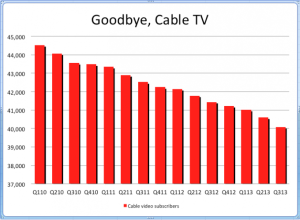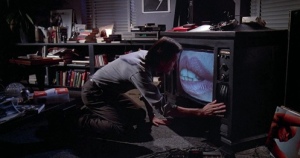A good friend of mine contacted me sometime ago; he’s a professional computer programmer with an extensive background and knowledge of many things relating to computer and people – and he spoke of the remarkable notion Ashley Madison consisted largely not of people speaking with people, but of people speaking with bots. Now the news is coming out and indeed my friend was right on the money.
I must confess; at first I chuckled at the notion – and then immediately stopped laughing. The implications were rather remarkable, not the least the tremendous legal impact for the folks at Ashley Madison who are facing a series of lawsuits that are likely going to bankrupt them – i.e., the ‘I paid to cheat with a person, not a bot!’ legal argument.
And now after the data dump(s) review(s), the details are coming out. Irony can be tough: the so-called hackers who obtained the data clearly intended to expose the folks conducting their illicit affairs (among them some thousands of emails involving federal officials and employees – the potential for blackmail is ripe).
And the jokes on everybody: it was just people talking to a bunch of robots – or ‘bots’ as they are called.
As recently reported in the recent issue of “Gizmondo” several interesting figures came out (http://gizmodo.com/ashley-madison-code-shows-more-women-and-more-bots-1727613924):
Number of Times Bots Sent People Messages on Ashley Madison:
Male: 20,269,675
Female: 1,492
So less than 1% of conversations on Ashley Madison were between people – and nobody noticed.
And not surprisingly, the number of accounts on Ashley Madison were not human either: turns out they were mostly “bots”.
Number of Bot Accounts in Ashley Madison:
Male: 43
Female: 70.529
So again, less than 1% of accounts were actually human females.
Just what is a bot?
Simply put, “bots” are software applications doing automated tasks. Typically, bots perform tasks that are both simple and structurally repetitive, at a much higher rate than would be possible for a human alone (this is the official description).
Bots are far from perfect; normally, they are irritating – a similar irritation you get when you’re speaking on the phone to an ‘automated attendant’ while you’re trying to pay your bill or get information about your mortgage account – only to find out there are no humans inhabiting the mortgage company and who keep on failing to understand what it is you want.
Bots simply repeat that they are programmed to do – such as saying the same old statements in response to any queries a user may give: ‘Hi”, ‘hello’, ‘so what brings you here’, ‘what’s your sign?’ etc., etc. A bot programmer types in what the bot is to say when and how in response to a specific set of words or phrases – and the bot goes about doing it’s thing. Ashley Madison users who logged on and started a chat with whom they assume was an attractive female looking for an affair wound up (statistically speaking) conversing with what was essentially a program pretending their were a human being.
And yet Ashley Madison users kept on paying their fees and membership costs, never noticing that they weren’t speaking with a non-human, (which makes you wonder about the quality of conversations nowadays) – and begs a question, ala “The Turing Test’.
‘The Turing Test’ was first proposed by Alan Turing, famed english mathematician who was instrumental in the creation of ENIAC and the worlds first computer designed to break the code machine named ‘Enigma’ utilized by Nazi’s in World War II. During this time, Turing mused about the nature of computers and the possibility of artificial intelligence (AI), suggesting that if one really wanted to know if a computer is indeed an AI, all one would have to do is undertake a conversation with the AI. If the human conversing with the AI doesn’t notice the difference, then arguably that computer is an AI who has attained a degree of intelligence. At this point, the computer will have (supposedly) attained ‘singularity’.
The term ‘singularity’ refers to that magical moment when a / or several computers attain true consciousness and self-awareness. Kind of like if Big Blue where to, after defeating another human at chess would spout out ‘loser!’ – and actually mean it.
For the record, I don’t agree that bots are a form of AI and that the bots at Ashley Madison attained any degree of singularity. But all of this begs several questions:
1) Is it a matter of bots / “computers” becoming smarter or humans being dumber? Given the type of conversations which took place on Ashley Madison, it would appear that bots mimicking humans are now far more prevalent than ever before and that humans programming them know all too well their audience – i.e., the stupid idiots. In that sense, perhaps the ‘singularity bar’ has been lowered, leaving one to wonder if it is the humans who need “singularity” more than computers.
2) Given the number of bots involved and how they proliferated so quickly, are these bots actually attempting to establish relationship with their human hosts? Not likely; who’d want to hang out with a bunch of idiots paying money and failing to notice the difference between a robot and an actual human?
3) How many hooks up were actually attained through the offices of Ashley Madison? Surprisingly, there were some made, but not between bots and humans. Evidently, Ashley Madison had a special bot designed to make such one-on-one connections (from the article):
“RunChatBotXmppGuarentee.service.php,” apparently designed just for interactions with customers who paid the premium $250 for a “guaranteed affair.” When I checked the code, I found Mr. Falcon was right. It appears that this bot would chat up the man, urge him to pay credits, and then pass him along to what’s called an “affiliate.” Likely the affiliate is a third-party that provides a real person for the man to chat with. It might also be connecting him to an escort service.
In other words, Ashley Madison was a front for escort services; this oughta prove interesting to a number of local and state prosecutors.
And the science doesn’t just stop there:
Earlier this year, one Ashley Madison engineer spent a couple of days mocking up a possible system for paying actual human women for engaging the men. The code calculates a ‘FemaleValue’ (percentage credited to the woman’s account ) based on ‘MaleProfit’ (amount the man pays to Ashley Madison). If the woman engages the man within 20 to 30 minutes of the time he buys credits, she’ll be credited with 5 percentage of the profit. It doesn’t appear this that this system wasn’t deployed, but it was obviously something Ashley Madison developers were thinking about.
This is known in scientific circles as “The Horniness Factor”: the harder the male appendage to the more likely they’ll pay out cold cash for, er, tension release.
4) Did Alan Turing even consider the possibility of “Bots”? Not likely – and especially not the degree to which some folk would fail to note their conversing with a bot and not actual human.
And speaking of Alan Turing, Ashley Madison made it a point to discourage gay male ‘cruising’, for the only sex options people logging onto Ashley Madison have access to are the following:
1: Attached Female Seeking Males
2: Attached Male Seeking Females
3: Single Male Seeking Attached Females
4: Single Female Seeking Attached Males
5: Attached Male Seeking Males
6: Attached Female Seeking Females
…which kind of makes one wonder why did they leave out this potentially profitable market segment? Squeamishness on the part of Ashley Madison over gay sex? Fear of drawing unwanted attention? Gee, kind of late for that. This also may suggest that the owners of Ashley Madison are dyed-in-the-wool Republicans who believe in old-fashioned traditional values: ripping off men who want to have sex with women, just as it has been done for centuries (although lesbianism is cool; makes for fun threesomes).
So, to summarize:
- Ashley Madison became a victim of their own numerous little Frankenstein monsters: the bots.
- The bots, once released, developed an entirely new degree of human inter-relationship: sex with machines. Users logging on wound up paying good money to converse with robots.
- These same humans who, owing to their lack of intelligence on the part of the users had no idea they just participated in a low-level Turing Test.
And while the bots introduced the executive staff at Ashley Madison a whole new level of legal and financial pain, they remind us once again that important lesson:
Just as individuals have to manage their urges, so too must larger entities learn to manage their bots.







